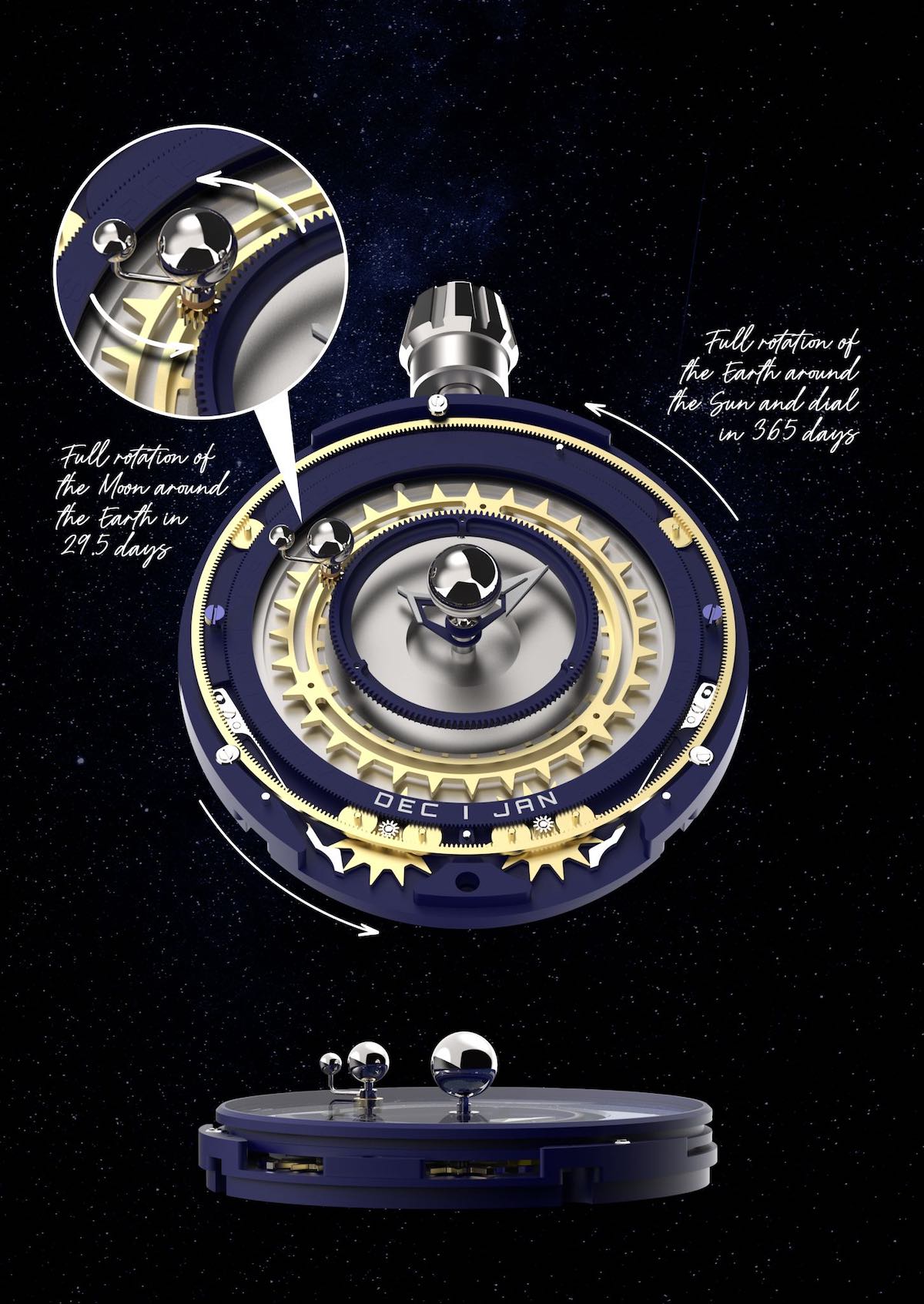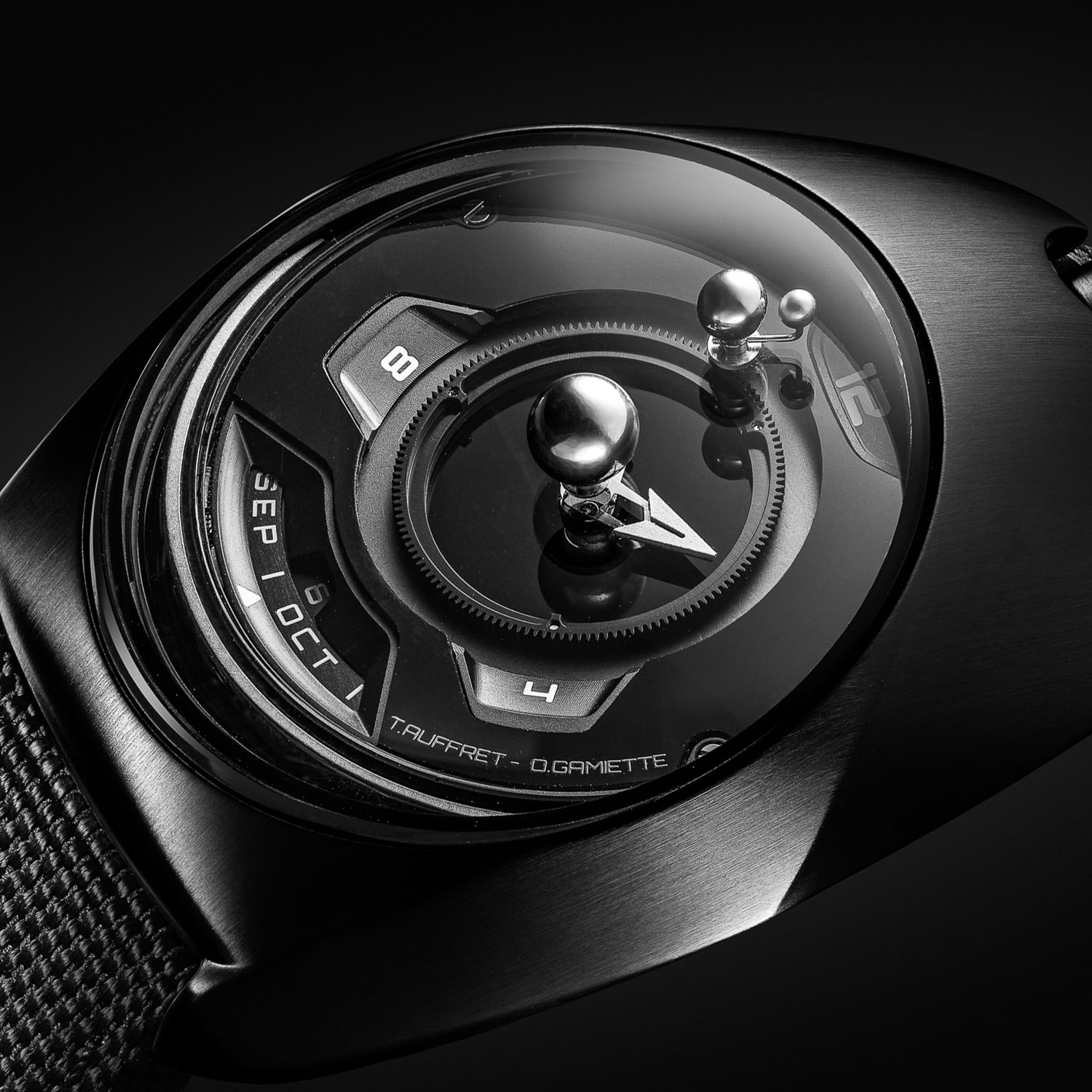The SpaceOne Tellurium is back with Black or Blue Titanium Cases
The accessible, neo-futuristic wrist-sized Tellurium watch in two bold colours.

Young collaborative project/brand SpaceOne continues its exploration of watchmaking through a parallel galaxy… Last year, the bold and modern SpaceOne Jumping Hour emerged from the visionary mind of Théo Auffret, a Parisian independent watchmaker crafting intricate timepieces like the Tourbillon Grand Sport and Guillaume Laidet, the man spearheading the revival of Nivada, Excelsior Park and Vulcain. The second step was even more unusual and was a neo-futuristic, audacious sci-fi watch with a rare complication, a wrist-sized Tellurium. It’s now back in two new and even more coherent versions, with black or blue titanium cases for the SpaceOne Tellurium.
A futuristic take on watchmaking, SpaceOne started with a spacecraft-shaped jumping hour watch imagined by Paris-based independent watchmaker Théo Auffret and young entrepreneur Guillaume Laidet, behind the return of Nivada Grenchen and Excelsior Park. The idea behind SpaceOne was to create “the first watchmaking workshop for neo-futuristic horology, dedicated to making stunning Haute Horlogerie affordable.” The second watch pushed the concept much further, not only in terms of design but mostly for the complication onboard… Once again a joint-venture by Auffret and Laidet, this time accompanied by designer Olivier Gamiette, the second SpaceOne boasted a Tellurium. And if you’ve never heard about this complication, it’s for a reason. It has hardly been made for wristwatches and has mostly been seen in table clocks.

What is it, then? A tellurium (also known as Tellurion or Loxocosm) is an intricate mechanism and a tool to illustrate the dynamic interplay between day, night, and the changing seasons, all influenced by our planet’s rotation on its axis and its orbit around the Sun. In times past, tellurium depicted these celestial phenomena, tracked the Moon’s age and maintained a perpetual calendar. In watchmaking, a standout example featuring the tellurium complication is the Tellurium Johannes Kepler, a remarkable creation from Ulysse Nardin’s Trilogy of Time (thanks to master watchmaker Ludwig Oechslin), unveiled in 1992.
The SpaceOne was conceived, at least regarding the mechanical module on top of the classic automatic base movement, by Auffret. First seen in a polished, natural titanium case, it’s now coming back in two new, even more space-oriented versions. What remains unchanged is the case shape and proportions, evoking the futuristic silhouette of a space capsule. It’s a sizeable watch measuring 50mm in length, 42mm in width, and standing 16mm tall. It is also a watch with strong personality. It’s not going to fly undercover, but will be noticed. And even more so as the polished grade 5 titanium case of the original version has now been replaced by brushed surfaces coated in black or blue PVD.
Under a complex and ultra-domed sapphire crystal is the fascinating part, the tellurium module, displayed over a black or blue aventurine background and signed by its creators, Auffret and Gamiette. At its heart is the Sun, the centre of our cosmic system, with two short but sharp hands in the mid-section indicating the hours and minutes. The lower part is home to two calendar indications, the date and the month. But of course, the main attraction is the astronomical complication, with a planetary wheel depicting the joint dance of the Earth and Moon. Earth completes its orbit in a year, while the Moon gracefully traverses its cycle in 29.5 days.
Powering this purpose-built module and the heart of the SpaceOne Tellurium is an automatic calibre P024 by Soprod. A simple, reliable movement that allows for the watch to remain fairly priced. Whether you opt for a blue or a black version, the watch is worn on a 22mm black fabric strap with grade 5 titanium buckle.
Available as of December 5th, 2024 from the brand’s website, each new version of the SpaceOne Tellurium is limited to 200 pieces and priced at EUR 2,990 (excl. taxes). Not cheap, but also fairly reasonable for a unique complication. For more details, please visit SpaceOneWatches.com.










